Self Watering Plant Pots
How Do Self Watering Plant Pots Work
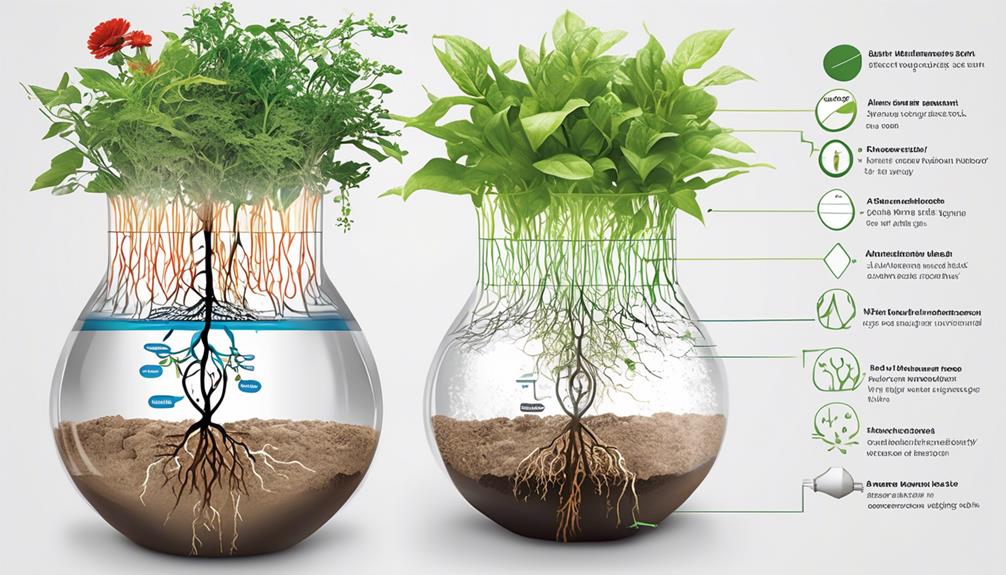
So, you’ve decided to join the ranks of those who label themselves as ‘black thumbs’ by opting for self-watering plant pots. However, how do these seemingly magical gadgets actually work?
Well, let's just say there's more to it than meets the eye. The technology behind self-watering plant pots is a fascinating blend of innovation and simplicity that has piqued the interest of many garden enthusiasts.
From the components of a self-watering system to how these pots regulate moisture, there's a lot to uncover. And trust me, it's not as straightforward as it seems.
Key Takeaways
- Self-watering pots use a passive wicking system to deliver water to plant roots.
- Water reservoirs store excess water at the bottom of the pot.
- Capillary action allows water to move against gravity, keeping the soil moist.
- Self-watering pots prevent overwatering and underwatering, promoting healthier plant growth.
The Technology Behind Self-Watering Pots
Self-watering pots utilize a passive wicking system to deliver water to the plant's roots as needed, eliminating the need for frequent manual watering. The technology behind these pots involves the use of water reservoirs and capillary action.
The water reservoir, usually located at the bottom of the pot, stores excess water. A wicking mechanism, such as a wick or fabric, extends from the reservoir into the soil. This wick draws water from the reservoir up into the soil through capillary action, which is the ability of water to move through narrow spaces, such as the soil, due to the forces of adhesion and cohesion.
The capillary action allows the water to move upwards, against the force of gravity, keeping the soil consistently moist. This ensures that the plant's roots have access to water as needed, promoting healthy growth. By maintaining a balanced level of moisture in the soil, self-watering pots create an optimal environment for the plant to thrive.
This technology is particularly beneficial for individuals who may have difficulty with regular watering schedules, as it provides a self-sustaining system for keeping plants adequately hydrated.
Components of a Self-Watering System
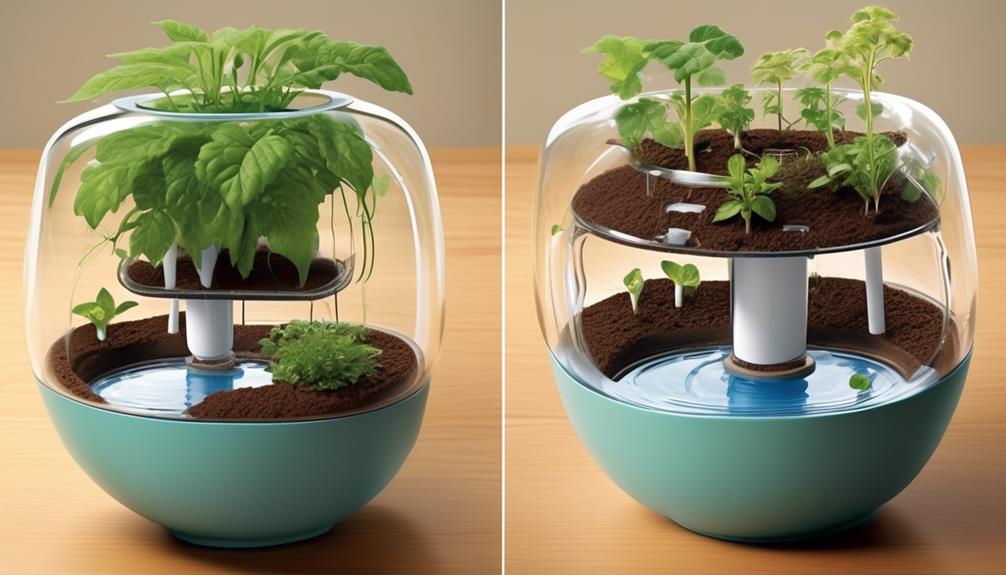
Utilizing a passive wicking system, self-watering pots incorporate a water reservoir and capillary action to maintain optimal soil moisture levels for plant growth. The water reservoir, typically located at the bottom of the pot, stores excess water that the plant can draw from as needed. This reservoir is designed with a water level indicator, allowing users to monitor the water supply easily.
Capillary action, facilitated by a wick or porous material, enables water to move from the reservoir to the soil above it, ensuring a consistent supply of moisture. The wick acts as a conduit, drawing water upward through small spaces between soil particles. As the soil dries out, capillary action pulls more water from the reservoir into the root zone, providing a continuous supply of moisture to the plant.
How Self-Watering Pots Regulate Moisture
Incorporating a passive wicking system enables self-watering pots to effectively regulate moisture levels by utilizing a water reservoir and capillary action. This mechanism ensures that the plants receive water as needed, preventing both overwatering and underwatering.
Self-watering pots regulate moisture through the following process:
- Capillary Action: The potting soil, typically placed above a water reservoir, is in direct contact with the water through a wick. This wick, usually made of fabric or other porous materials, draws water from the reservoir into the soil through capillary action. As the soil dries out, the capillary action continues to pull water upwards, ensuring the soil remains consistently moist.
- Watering Frequency: The presence of a water reservoir allows for less frequent watering. The reservoir typically needs to be refilled every 1-2 weeks, depending on the plant's water requirements and environmental conditions. This reduces the need for daily monitoring of soil moisture levels and watering, making it an ideal solution for those with busy schedules or for serving a large number of plants.
- Moisture Control: By maintaining a consistent level of moisture in the soil, self-watering pots create an optimal environment for plant growth. This controlled moisture level also helps prevent issues such as root rot or dehydration, promoting healthier and more vigorous plant growth.
Advantages of Using Self-Watering Planters
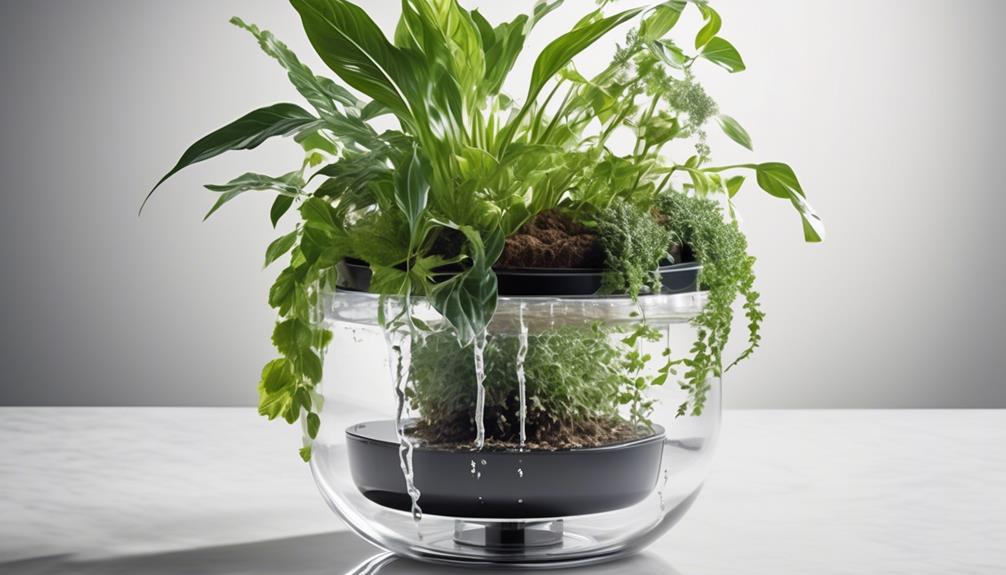
Using self-watering planters offers several advantages for maintaining healthy and thriving plants.
One significant advantage is cost savings. Self-watering planters reduce water usage by delivering water directly to the plant's roots, minimizing evaporation and runoff. This efficient water delivery system means less frequent watering is required, resulting in lower water bills and reduced water waste. Additionally, the built-in reservoir of self-watering planters prevents overwatering, which can lead to waterlogged soil and root rot, ultimately saving money by preventing plant loss and the need for replacements.
Another advantage of using self-watering planters is the environmental benefit. By conserving water, these planters contribute to water sustainability, particularly in regions prone to drought or water restrictions. Furthermore, the controlled water delivery minimizes the leaching of nutrients from the soil, reducing the environmental impact of excess fertilizer runoff into water systems. This environmentally conscious approach aligns with the goal of serving the community by promoting sustainable gardening practices.
Tips for Maintaining Self-Watering Pots
Maintaining self-watering pots involves regularly monitoring the water reservoir, checking for proper drainage, and adjusting the watering frequency based on environmental conditions and plant needs.
Here are some essential tips for effectively maintaining self-watering pots:
- Regularly Monitor Water Levels: Check the water reservoir frequently to ensure an adequate water supply for the plants. Depending on the size of the pot and the plant's water needs, refill the reservoir as necessary to prevent the soil from drying out.
- Inspect Drainage: Periodically examine the drainage system to confirm that excess water can escape properly. Ensure that the overflow mechanism is functioning correctly to prevent waterlogging, which can lead to root rot and other issues.
- Adjust Watering Frequency: Monitor environmental conditions such as temperature and humidity, as well as the plant's growth stage and water requirements. Adjust the watering frequency accordingly to maintain optimal moisture levels in the soil.
Proper plant care and watering solutions are crucial for the health and growth of your plants. By diligently following these maintenance tips, you can ensure that your self-watering pots effectively support the well-being of your plants.
Frequently Asked Questions
Can Self-Watering Pots Be Used for All Types of Plants, Including Outdoor and Indoor Plants?
Yes, self-watering pots can be used for a variety of plants, both indoor and outdoor. They're compatible with a wide range of plant types, providing a convenient solution for maintaining optimal moisture levels.
For outdoor plants, these pots offer durability and reduce the frequency of watering, making them a practical choice for gardeners.
Additionally, they simplify plant maintenance, making them suitable for busy individuals or those seeking a low-maintenance gardening solution.
Are There Any Potential Drawbacks or Limitations to Using Self-Watering Plant Pots?
Potential drawbacks of self-watering plant pots may include:
- The need for regular maintenance to prevent clogging and ensure proper water distribution.
- Some plants may not thrive in a self-watering system, as they may require specific soil conditions or drainage.
Understanding the maintenance requirements and limitations of self-watering pots is crucial for successful plant care. Regular checks and adjustments are necessary to ensure the health of the plants.
How Often Should the Water Reservoir in a Self-Watering Pot Be Refilled?
When it comes to the refilling frequency of the water reservoir in a self-watering pot, it largely depends on factors such as plant type, environmental conditions, and pot size.
The watering mechanism of these pots ensures that the soil absorbs water as needed, minimizing the frequency of refills. However, a general guideline is to check the water level weekly and refill as necessary to maintain optimal moisture for the plants.
Can Self-Watering Pots Help Prevent Overwatering as Well as Underwatering?
Yes, self-watering pots can prevent overwatering by providing a reservoir for plants to access water as needed. This promotes healthy root growth and efficient water usage, optimizing plant growth.
The system ensures a steady supply of moisture, preventing excess water accumulation that can lead to root rot.
Are Self-Watering Pots Suitable for Use in Extreme Weather Conditions, Such as During Very Hot or Cold Periods?
Are self-watering pots suitable for use in extreme weather conditions, such as during very hot or cold periods?
Absolutely! Self-watering pot technology is designed to provide consistent moisture levels to plants, making them resilient in varying climates.
The design includes a reservoir that supplies water to the soil as needed, ensuring plants receive adequate hydration even during extreme weather.
This technology offers a reliable solution for maintaining healthy plants in harsh environmental conditions.
What Are the Key Components of Self-Watering Plant Pots and How Do They Function?
Florabest self watering pots contain a water reservoir and a wicking system that draws water into the soil. The reservoir holds excess water, preventing overwatering. The wicking system transfers water from the reservoir to the soil as needed, ensuring plants receive consistent moisture levels without manual watering.
Conclusion
In conclusion, self-watering plant pots work by utilizing a reservoir and wicking system to provide a consistent supply of water to the plant's roots. This technology allows for more efficient moisture regulation, reducing the risk of over or under-watering.
The advantages of using self-watering planters include improved plant health, reduced maintenance, and water conservation.
By maintaining these pots properly, gardeners can enjoy the benefits of a self-sustaining and thriving garden.
Self Watering Plant Pots
Self Watering Plant Pots Using Soda Bottles
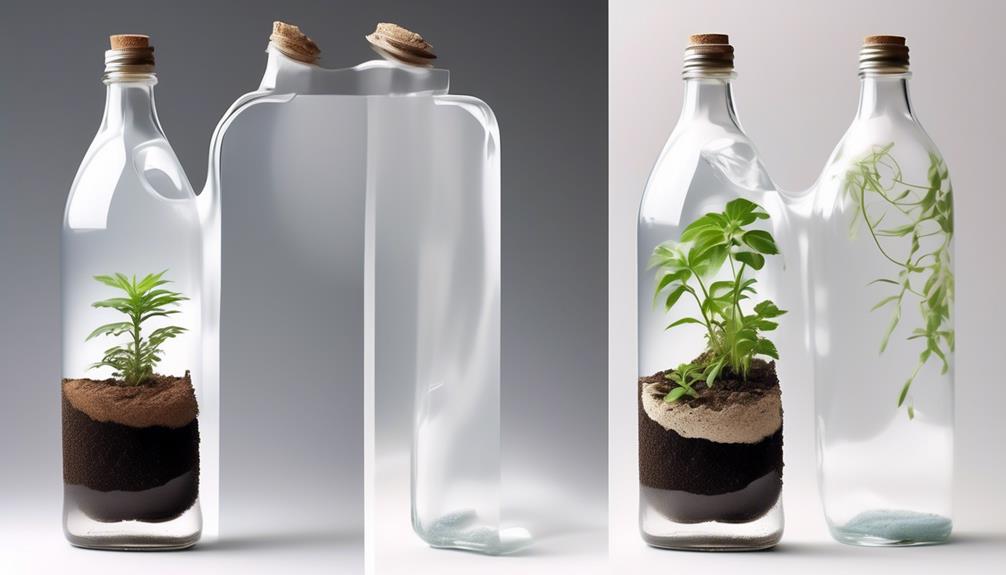
We’ve all forgotten to water our plants from time to time, but did you know that improper watering is the reason why over 90% of indoor plants die? Utilizing self-watering pots could dramatically change the game for plant enthusiasts.
What if I told you that you can easily create your own using something as simple as a soda bottle? This innovative method not only ensures that your plants receive the water they need, but it also reduces the frequency of watering, making it a convenient solution for busy individuals.
So, how exactly can you transform a soda bottle into a self-watering plant pot? Let's explore this fascinating DIY project together.
Key Takeaways
- Self-watering plant pots are important for ensuring plants receive the water they need and reducing the frequency of watering.
- DIY self-watering pots can be easily created using empty 2-liter soda bottles, well-draining potting mix, twine or cotton rope, and scissors.
- The assembly process involves cutting the soda bottle, creating a wick using absorbent fabric, and sealing the two halves to prevent water leakage.
- Self-watering pots promote water conservation, prevent overwatering, and contribute to environmental conservation by repurposing soda bottles.
Materials Needed
To create self-watering plant pots, you'll need the following materials.
First, gather some empty 2-liter soda bottles, which can be easily obtained from recycling. These bottles will serve as the main reservoir for water.
Next, you'll need some soil, preferably a well-draining potting mix suitable for the specific plant you intend to grow.
Additionally, you'll require some twine or cotton rope, which will act as the wick to draw water from the reservoir to the soil.
Lastly, grab a pair of scissors to cut the bottles and the wicks to the appropriate lengths.
Step-by-Step Instructions
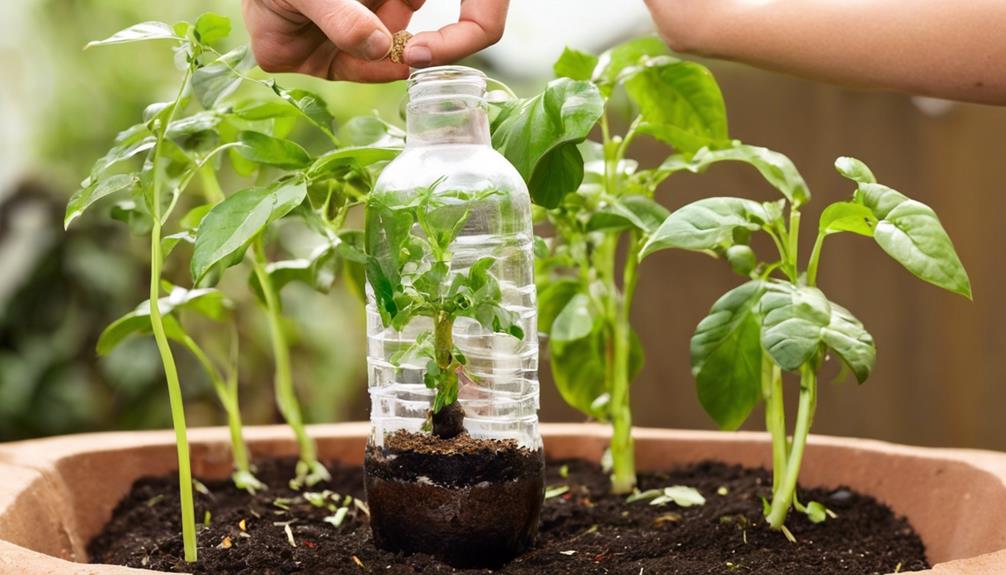
Starting with a clean and dry 2-liter soda bottle, carefully remove the label and cap before proceeding with the next steps.
Once the bottle is prepped, follow these instructions to create your own self-watering plant pot:
- Cut the bottle: Using a sharp knife or scissors, carefully cut the bottle in half, approximately two-thirds of the way up from the bottom.
- Create the wicking system: Take the top half of the bottle (the one with the cap removed) and pierce a few small holes near the cap area. Then, roll up a piece of absorbent fabric and insert it through the holes, ensuring it hangs down into the bottom half of the bottle.
- Assemble the pot: Place the top half of the bottle upside down into the bottom half. The top half will act as a reservoir for water, while the bottom half will hold the soil and the plant.
Assembly Process
After carefully cutting the 2-liter soda bottle in half and creating the wicking system as detailed in the previous instructions, the next step in the assembly process is to securely place the top half of the bottle upside down into the bottom half, forming the self-watering plant pot.
Once the top half is inserted into the bottom half, the wicking system should extend into the lower section, allowing for water to be drawn up to the plant's roots. It's crucial to ensure a tight fit between the two halves to prevent any water leakage.
To further secure the two halves together, we recommend using waterproof tape or silicone sealant around the seam. This will create a watertight seal, ensuring that the watering mechanism functions properly and preventing any water from escaping.
Additionally, take a moment to appreciate the recycling benefits of this project. By repurposing 2-liter soda bottles into self-watering plant pots, you're not only creating a sustainable watering solution for your plants, but also contributing to environmental conservation by reducing plastic waste.
It's a simple yet effective way to serve both your plants and the planet.
Plant Care Tips

Regularly monitor the soil moisture level to ensure adequate hydration for your plants. This is crucial for maintaining healthy root development and overall plant growth. Here are some plant care tips to keep in mind:
- Check the soil moisture by inserting your finger about an inch into the soil. If it feels dry, it's time to water the plant. If it's still moist, hold off on watering to prevent overhydration.
- Consider the specific water needs of each plant. Some plants prefer consistently moist soil, while others require periods of dryness between watering. Research the water requirements of each plant in your self-watering pots to provide the ideal environment for root development.
- Keep an eye on the drainage system to prevent waterlogging. Excess water can lead to root rot and other issues. Ensure that the self-watering system is functioning properly to maintain a healthy balance of soil moisture.
Benefits of Self-Watering Pots
To maintain healthy root development and overall plant growth, it's essential to understand the benefits of using self-watering pots in plant care. Self-watering pots promote water conservation by reducing the frequency of watering, as they provide a reservoir for storing water that can be accessed by the plants as needed. This not only benefits the environment but also saves time and effort for the plant caretaker.
Additionally, self-watering pots contribute to plant health by preventing overwatering, which can lead to root rot and other water-related issues. The consistent moisture levels maintained by these pots create an ideal growing environment, promoting healthier and more vigorous plant growth.
The convenience offered by self-watering pots is undeniable. They reduce the need for frequent watering, making them ideal for busy individuals or those who may not have easy access to their plants every day. Moreover, the sustainability aspect of these pots aligns with the growing interest in eco-friendly practices, as they help minimize water wastage and support responsible plant care.
Frequently Asked Questions
Can I Use Any Size or Type of Soda Bottle for This Self-Watering Plant Pot System?
Yes, you can use various types and sizes of soda bottles for the self-watering plant pot system. Different materials and sizes can be compatible, but ensure the bottle's effectiveness in holding and releasing water.
Alternatives like plastic or glass bottles can also work well. Consider the specific needs of your plants and the environment when choosing the bottle size and type for optimal performance.
How Often Do I Need to Refill the Water in the Soda Bottle for the Self-Watering Plant Pot?
We typically only need to refill the water in the soda bottle for the self-watering plant pot every 1-2 weeks. The frequency may vary based on the plant's water needs and the environmental conditions.
This self-watering system efficiently regulates moisture, reducing the need for frequent refills. It's a practical and efficient way to ensure your plants receive consistent hydration.
This method simplifies plant care, making it convenient for busy individuals.
Will the Self-Watering System Work for All Types of Plants, Including Those That Require More or Less Water?
Watering frequency and plant compatibility are important considerations for the self-watering system.
Different plants have varying water requirements, so it's crucial to choose compatible ones. Some plants may need more frequent watering, while others require less.
Understanding the specific needs of each plant is key to a successful self-watering system.
It's essential to research and select plants that can thrive in a self-watering environment, ensuring they receive the right amount of water for optimal growth.
Can I Use a Different Type of Container Besides a Soda Bottle for the Self-Watering System?
Yes, different containers can be used for the self-watering system. Alternatives include plastic or glass vessels that can hold water.
However, it's important to consider the watering options and plant compatibility. Some containers may have limitations, affecting the system's effectiveness.
Drawbacks may include size or material differences.
It's crucial to assess the container's suitability in maintaining the self-watering function for healthy plant growth.
Are There Any Potential Drawbacks or Limitations to Using a Self-Watering Plant Pot System With Soda Bottles?
Potential drawbacks and limitations of using a self-watering plant pot system with soda bottles include maintenance and evaporation. The size and effectiveness of the system may also pose challenges.
Regular monitoring and refilling of the bottles are essential to ensure proper hydration for the plants. Additionally, larger plants may require multiple bottles for adequate watering.
It's important to consider these factors when utilizing soda bottles for self-watering plant pots.
Can I Use Soda Bottles for Indoor Self-Watering Plant Pots?
Yes, you can absolutely use soda bottles for indoor self-watering plant pots. All you need to do is carefully cut the bottle in half, use the top part as a funnel for watering, and place the bottom part with the plant in it. The bottle will act as a reservoir for the indoor self watering plant pots.
Conclusion
In conclusion, creating self-watering plant pots using soda bottles is a simple and effective way to ensure your plants stay hydrated.
Just like how we need to stay hydrated to thrive, our plants also need a consistent water supply to thrive and grow.
By using this DIY method, you can save time and energy while providing your plants with the care they need to flourish.
Try it out and see the difference for yourself!
With a green thumb and a keen eye for detail, Kayla leads our content with expertise and enthusiasm. Her dedication to spreading the joy of home gardening is reflected in every piece of advice and tip shared. She ensures that our community receives the most reliable and practical gardening insights.
Self Watering Plant Pots
Are Self Watering Planters Good

Many of us have wondered whether self-watering containers serve as a successful solution for maintaining healthy and thriving plants, while eliminating the constant hassle of manually watering them. When considering the advantages and disadvantages of self-watering planters, it’s important to weigh their convenience against the needs of different plant species.
Are these innovative planters truly a game-changer in the world of gardening, or do they come with hidden downsides that might surprise even the most seasoned green thumbs?
Key Takeaways
- Self-watering planters provide consistent and efficient water supply to plants.
- They prevent under or over-watering, saving time and reducing manual watering frequency.
- Self-watering planters help conserve water and lower water bills.
- Choosing the right planter size and selecting plants with compatible water requirements are essential for successful growth in self-watering planters.
Benefits of Self-Watering Planters
When considering the benefits of self-watering planters, it becomes evident that they provide a consistent and efficient means of supplying water to plants, ensuring optimal hydration levels and promoting healthy growth. This watering efficiency is particularly beneficial for individuals who've busy schedules or may be prone to forgetting to water their plants regularly.
The self-watering mechanism helps in maintaining plant health by preventing under or over-watering, which are common issues with traditional watering methods. Additionally, these planters are time-saving as they reduce the frequency of manual watering, allowing individuals to focus on other gardening tasks.
Moreover, the cost-effectiveness of self-watering planters lies in their ability to conserve water by minimizing evaporation and runoff, ultimately leading to lower water bills. From a scientific perspective, the design of self-watering planters ensures that plants receive water consistently and in appropriate quantities, creating an optimal environment for their growth and development.
Types of Self-Watering Systems
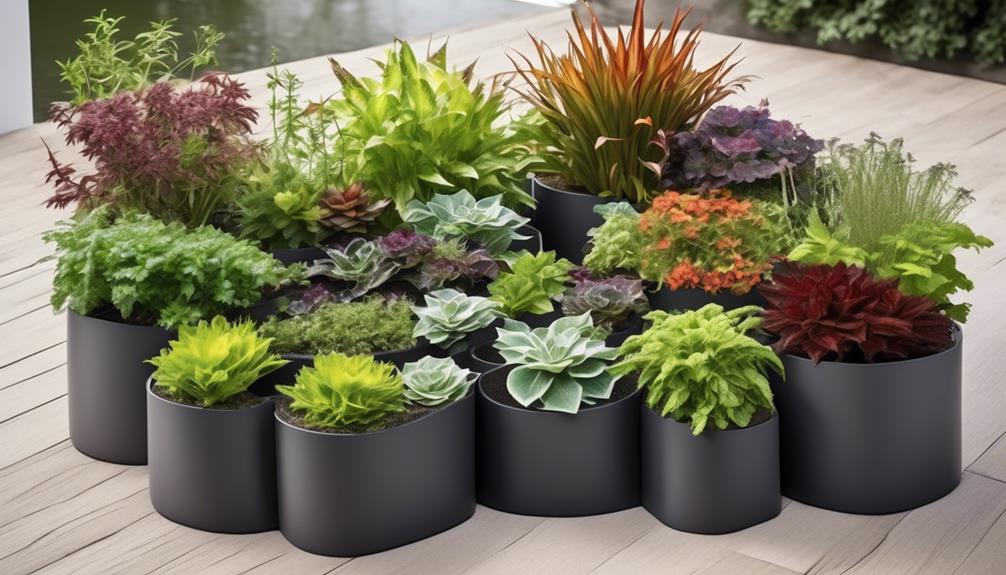
Have you ever wondered about the various types of self-watering systems available for planters and their specific mechanisms for efficient water delivery to plants? When it comes to plant hydration and soil moisture management, there are several innovative self-watering techniques and irrigation methods that can be employed. Below, we will delve into four common types of self-watering systems and their unique mechanisms for ensuring optimal moisture levels for plants.
| Type of Self-Watering System | Mechanism |
|---|---|
| Wick System | Utilizes a wick to draw water from a reservoir into the soil, maintaining consistent moisture levels. |
| Passive System | Relies on the principle of capillary action to deliver water from a reservoir to the soil as needed by the plant. |
| Sub-Irrigation System | Involves a reservoir located beneath the soil, allowing plants to absorb water through the bottom up, preventing overwatering. |
| Self-Regulating System | Uses a water level indicator to gauge soil moisture and release water from the reservoir only when necessary, preventing waterlogging. |
These self-watering systems offer efficient and reliable ways to maintain soil moisture and ensure proper plant hydration, making them valuable tools for plant care enthusiasts.
Choosing the Right Planter Size
Choosing the right planter size is crucial for ensuring the adequate space and soil volume necessary to support healthy plant growth and development. When choosing a planter, it's important to consider the plant's mature size and root system. A planter that's too small can restrict root growth, leading to stunted plants, while a planter that's too large can hold excess water, causing root rot.
The pot size directly impacts the watering needs of the plant. A larger pot will hold more soil, which can retain more water, requiring less frequent watering. However, proper drainage is essential regardless of the planter size. Inadequate drainage can lead to waterlogged soil, depriving the roots of oxygen and causing root rot.
Before selecting a planter, it's essential to assess the plant's watering needs, growth habits, and mature size. By choosing a planter with the appropriate size and good drainage, we can provide the optimal environment for plants to thrive. It's also important to consider the material of the planter, as materials like terracotta and unglazed ceramic can allow for better aeration of the roots, while plastic and metal may retain more moisture.
Best Plants for Self-Watering Planters
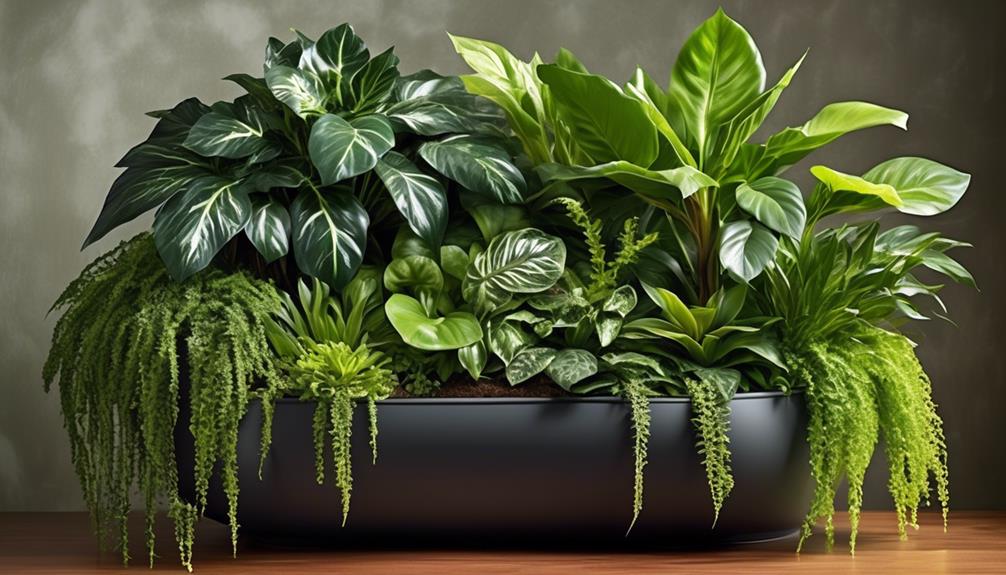
When selecting plants for self-watering planters, we need to consider ideal choices that thrive in consistent moisture levels. Understanding the watering frequency required by different plant species is essential for successful growth and maintenance.
Ideal Plant Choices
Popular choices for self-watering planters include low-maintenance plants such as snake plants, pothos, and peace lilies, which thrive in consistent moisture levels. When considering plant selection for self-watering planters, it's crucial to choose species that can tolerate moist conditions without succumbing to root rot. Plants with moderate to low watering needs are ideal for self-watering containers. These include spider plants, Chinese evergreens, and philodendrons. Their ability to adapt to the self-watering system ensures healthy growth while minimizing the risk of overwatering.
Additionally, herbs like mint, basil, and cilantro can flourish in self-watering planters, providing a fresh supply for culinary use. When utilizing self-watering techniques, selecting plants with similar water requirements is essential to maintain a harmonious environment within the planter.
Watering Frequency Tips
In self-watering planters, selecting plants with similar water requirements is essential to maintain a harmonious environment within the planter, ensuring optimal growth and minimizing the risk of overwatering.
When considering watering frequency, it's crucial to account for factors such as plant species, planter size, and environmental conditions. Some plants, like succulents and cacti, thrive in drier conditions and may only require watering every 1-2 weeks, while others, such as ferns and peace lilies, prefer consistently moist soil and may need watering every 3-4 days.
Monitoring moisture levels is imperative for successful plant growth. Self-watering planters enable precise moisture control, promoting plant health by ensuring that the soil moisture remains within the ideal range for the selected plant species, reducing the likelihood of both under and overwatering, and ultimately fostering optimal growth.
Growth and Maintenance
Selecting plant species with compatible water requirements is crucial for successful growth and maintenance in self-watering planters. Proper selection ensures that the plants receive the right amount of water, promoting healthy growth and minimizing maintenance. When choosing plants for self-watering planters, it's essential to consider their specific watering needs to achieve optimal results. Below is a table featuring some of the best plants for self-watering planters, along with their water requirements and growth characteristics.
| Plant | Water Requirements | Growth Characteristics |
|---|---|---|
| Snake Plant | Low | Slow-growing |
| Peace Lily | Moderate | Air-purifying |
| Spider Plant | Moderate | Fast-growing |
| Pothos | High | Trailing vines |
These plants are well-suited for self-watering planters and can thrive with the appropriate watering techniques, contributing to an aesthetically pleasing and low-maintenance indoor environment.
Maintenance and Care Tips
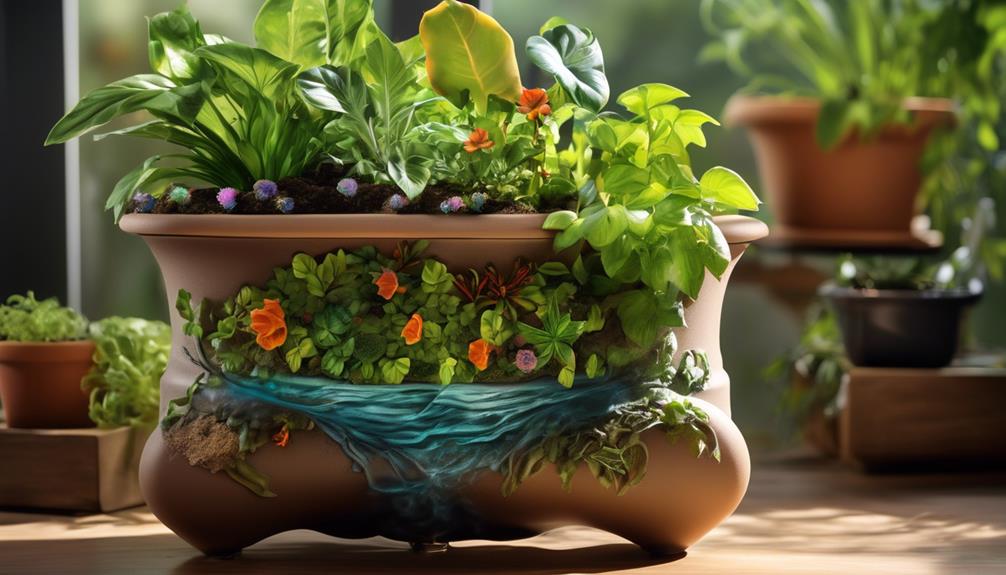
As we consider the maintenance and care of self-watering planters, it's essential to focus on water level monitoring and soil and nutrient management.
By regularly monitoring the water level, we can ensure that the plants receive an adequate supply without risking overwatering.
Additionally, managing the soil and nutrient content is crucial for the overall health and growth of the plants in these innovative planters.
Water Level Monitoring
Monitoring the water level in self-watering planters is crucial for ensuring optimal plant health and growth. Watering efficiency is enhanced through technology integration, allowing for precise control over moisture levels.
Many self-watering planters feature innovative designs that incorporate water level indicators, such as transparent reservoirs or electronic sensors. These innovations provide real-time feedback, enabling users to adjust watering frequency and duration based on the plant's specific needs.
Regularly checking the water level ensures that the reservoir doesn't run dry, preventing stress and potential damage to the plants. Additionally, it helps to prevent overwatering, which can lead to root rot and other issues.
Soil and Nutrient Management
To ensure optimal growth and health of plants in self-watering planters, it's essential to carefully manage the soil and nutrients, taking into account factors such as moisture retention, aeration, and nutrient balance.
- Soil Moisture: Regularly check the moisture level in the soil to ensure it remains within the optimal range for the specific plant species. Adjust the watering frequency based on the moisture needs of the plants.
- Nutrient Absorption: Monitor the nutrient levels in the soil and replenish as needed to maintain a balanced nutrient profile. Consider using slow-release fertilizers or organic compost to provide a steady supply of nutrients for the plants.
- Aeration: Periodically aerate the soil to prevent compaction and facilitate nutrient absorption. This can be achieved through gentle stirring of the soil or using specialized aerating tools.
Environmental Impact Considerations
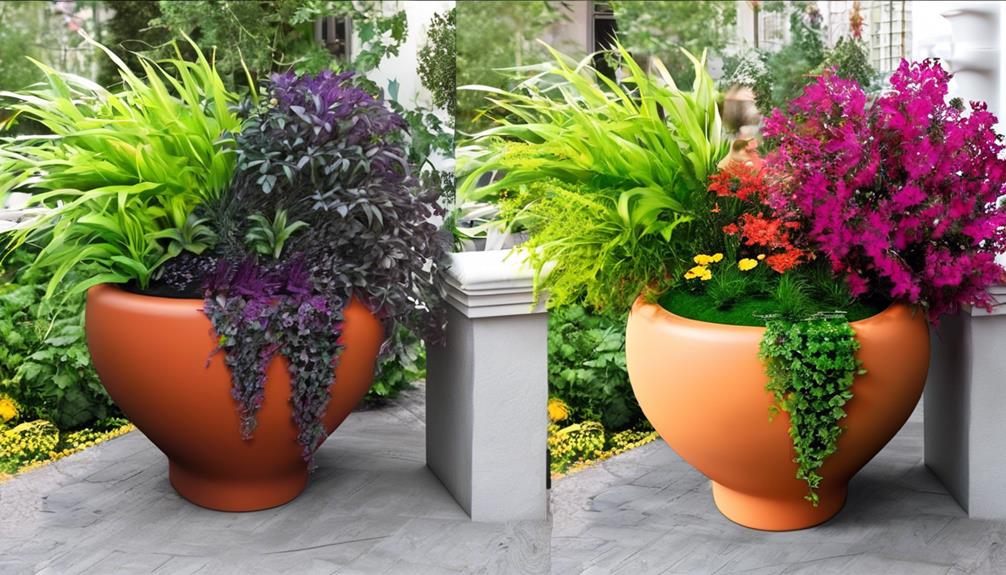
Considering the potential environmental impacts is crucial when evaluating the use of self-watering planters in various settings. One of the key advantages of self-watering planters is their contribution to environmental sustainability through efficient water conservation. These planters are designed to minimize water wastage by providing plants with a consistent water supply, reducing the overall water consumption compared to traditional watering methods. This has a significant impact on water conservation, particularly in regions facing water scarcity or during drought periods.
Moreover, the utilization of self-watering planters can positively influence plant growth and root development, which subsequently contributes to the environmental landscape. By ensuring plants receive adequate water at all times, these planters promote healthy root systems and overall plant vitality. This can have a cascading effect on the surrounding environment by enhancing green spaces, air quality, and biodiversity.
However, it's essential to consider the materials used in the construction of self-watering planters and their potential long-term environmental impact. Choosing eco-friendly, sustainable materials can further enhance the positive environmental footprint of these planters, ensuring that they align with broader environmental preservation goals.
Potential Drawbacks to Consider
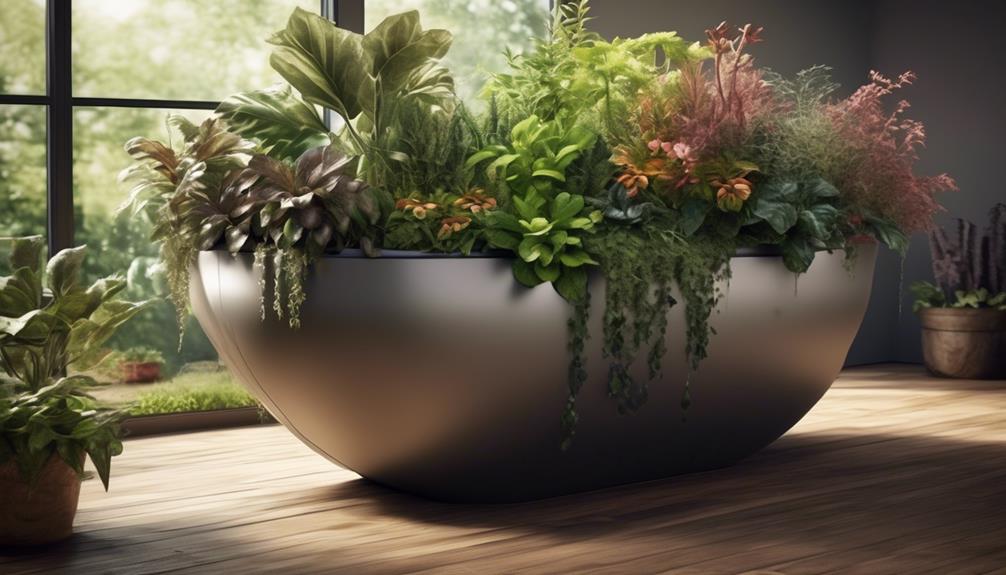
When considering self-watering planters, it's important to acknowledge the potential drawbacks that may arise.
Maintenance requirements such as cleaning and replacing the watering system components can add to the overall upkeep.
Additionally, the control of soil moisture may be challenging, potentially leading to overwatering or underwatering of the plants.
Furthermore, the impact of self-watering systems on plant health should be carefully monitored to ensure it aligns with the specific needs of the plant species.
Maintenance Requirements
We have found that regular cleaning of the watering system and periodic adjustment of the soil moisture levels are essential for optimal performance of self-watering planters. Proper maintenance is crucial for ensuring the health of plants and the longevity of the planter system.
Here are some key maintenance requirements to consider:
- Cleaning the watering system regularly to prevent clogs and ensure proper water distribution.
- Periodic adjustment of the soil moisture levels to accommodate changes in weather and plant growth.
- Checking and maintaining the overall structural integrity of the planter to prevent leaks or other malfunctions.
Soil Moisture Control
To ensure the optimal performance of self-watering planters, it's crucial to consider potential drawbacks associated with soil moisture control.
While self-watering planters offer enhanced watering efficiency and promote plant health, there are considerations regarding soil moisture and its impact on root development.
Overly moist soil can lead to root rot and other fungal diseases, jeopardizing the overall health of the plant. Additionally, if the self-watering system malfunctions, it may result in waterlogged soil, depriving the roots of essential oxygen and impeding their growth.
Monitoring and adjusting the watering system to suit the specific needs of different plants is essential to prevent these issues. Understanding the balance between soil moisture and root development is imperative for the successful implementation of self-watering planters.
Plant Health Impact
Monitoring the soil moisture levels and adjusting the watering system accordingly is essential to mitigate potential drawbacks and ensure the overall health of plants in self-watering planters. Impact on plant growth can occur if the watering system isn't properly calibrated.
Overwatering can lead to root rot and other water-related issues, while underwatering can stunt growth and cause wilting.
Additionally, the watering efficiency of self-watering planters may vary depending on factors such as plant type, environmental conditions, and planter design. It's crucial to closely observe the plants' response to the self-watering system and make adjustments as needed to optimize their health and growth.
DIY Self-Watering Planter Options

What are the most effective DIY self-watering planter options for maintaining optimal moisture levels in potted plants? DIY self-watering planters offer several benefits, including consistent moisture supply, reduced watering frequency, and improved plant health. Here are some popular DIY options for creating self-watering planters:
| DIY Option | Description |
|---|---|
| Wicking System | Utilizes a wick to draw water from a reservoir into the soil, ensuring a consistent moisture supply. |
| Upcycled Containers | Repurposes everyday items like plastic bottles or containers into self-watering planters, promoting sustainability. |
| Capillary Mat System | Involves a capillary mat that draws water from a reservoir into the soil through capillary action, maintaining optimal moisture levels. |
| Self-Watering Trays | Features a water reservoir beneath the plant container, allowing the soil to draw up water as needed, promoting efficient water usage. |
Each DIY option offers unique advantages, and the choice depends on factors such as plant type, container size, and personal preference. When selecting a DIY self-watering planter option, it's essential to consider the specific watering requirements of the plants and the environmental conditions to maintain optimal moisture levels for healthy plant growth.
Comparing Self-Watering Vs. Traditional Planters

Comparing self-watering planters with traditional planters provides valuable insights into the efficiency of moisture retention and its impact on plant health and growth. When evaluating the two types of planters, several factors come into play, including cost, environmental impact, efficiency, and plant health impact.
- Comparing cost: Traditional planters often require more frequent watering, leading to increased water consumption and potentially higher water bills. On the other hand, self-watering planters may initially cost more but can result in long-term savings due to their water-saving capabilities.
- Environmental impact: Self-watering planters have the potential to reduce water usage, making them more environmentally friendly compared to traditional planters. This efficient use of water is beneficial for areas experiencing water scarcity or drought conditions.
- Efficiency, plant health impact: Self-watering planters can provide a more consistent moisture level for plants, which is essential for their overall health and growth. Traditional planters, depending on the watering habits of the gardener, may result in fluctuating moisture levels, impacting the well-being of the plants.
Tips for Maximizing Planter Performance
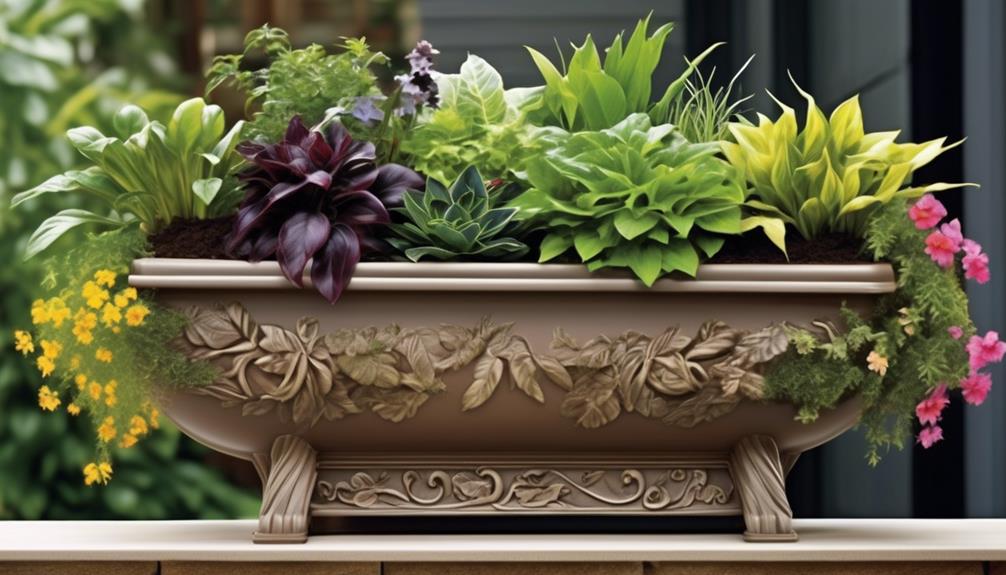
To enhance planter performance, consider implementing a consistent watering schedule to maintain optimal moisture levels for plant growth. Consistency is crucial for maximizing root growth and overall plant health. It's essential to adjust the watering schedule based on factors such as plant type, season, and environmental conditions.
When plants are actively growing or during hot weather, they may require more frequent watering to support their increased metabolic needs. Conversely, in cooler months or during dormancy, reducing the frequency of watering can prevent waterlogging and root rot.
Monitoring the moisture level of the soil is also vital. Using a soil moisture meter can help determine when it's time to water, ensuring that the plants receive adequate water without becoming waterlogged.
Additionally, it's beneficial to incorporate occasional deep watering sessions to encourage deep root growth, as shallow roots can make plants more susceptible to drought stress.
Frequently Asked Questions
Can Self-Watering Planters Be Used for Outdoor Gardening?
Yes, self-watering planters can be used for outdoor gardening. They provide outdoor durability and water efficiency, making them a great option for maintaining plants in outdoor settings.
These planters can accommodate various plant sizes and come in a range of container aesthetics to complement outdoor spaces.
Their self-watering feature ensures consistent moisture levels, reducing the need for frequent watering and allowing for optimal plant growth in outdoor environments.
What Are the Potential Long-Term Cost Savings of Using Self-Watering Planters?
Incorporating self-watering planters can result in potential long-term cost savings due to reduced water usage. These planters offer environmental benefits by promoting water conservation through efficient irrigation systems.
Over time, the reduced water consumption can lead to financial savings and contribute to sustainable gardening practices. The initial investment in self-watering planters can yield significant returns through decreased water bills and minimized environmental impact.
Are There Any Specific Soil or Fertilizer Requirements for Self-Watering Planters?
In self-watering planters, soil quality is vital for optimal plant growth. Good soil should be well-draining yet retain moisture, such as a mix of peat, vermiculite, and perlite.
Fertilizer type is also important; slow-release granular fertilizers work well, delivering nutrients gradually. Avoid liquid fertilizers, as they can lead to over-fertilization and damage the plants.
Understanding the specific soil and fertilizer requirements ensures healthy and thriving plants in self-watering planters.
How Do Self-Watering Planters Impact the Growth and Health of Plants Compared to Traditional Planters?
When comparing self-watering planters to traditional ones, the impact on plant growth is notable. The consistent and efficient watering system in self-watering planters promotes healthier root development and improved hydration, leading to better overall plant health.
This method also reduces the risk of over or under-watering, providing a more stable environment for plant growth.
Can Self-Watering Planters Be Used for Larger Plants or Trees, or Are They Better Suited for Smaller Plants?
When considering larger plants or trees, self-watering planters are suitable for outdoor gardening. They provide consistent moisture, promoting healthy growth while reducing soil and fertilizer requirements.
Long term, they offer cost savings. Comparing growth in self-watering planters to traditional ones shows improved plant health.
Their efficient water delivery system supports tree growth, making them a viable option for larger plants, contributing to overall garden vitality.
What Are the Benefits of Using Self-Watering Planters?
Self-watering planters effectiveness is proven in their ability to regulate water supply to plants, preventing over or under-watering. This results in healthier and more vibrant plants. Additionally, these planters save time and effort by reducing the frequency of watering needed, making them an ideal choice for busy individuals.
Conclusion
In conclusion, self-watering planters offer numerous benefits for plant health and convenience. The allusion of a well-oiled machine comes to mind when considering the efficient and consistent watering provided by these systems.
With the right maintenance and plant selection, self-watering planters can be a game-changer for any gardener, providing a reliable and hassle-free way to keep plants thriving.
With a green thumb and a keen eye for detail, Kayla leads our content with expertise and enthusiasm. Her dedication to spreading the joy of home gardening is reflected in every piece of advice and tip shared. She ensures that our community receives the most reliable and practical gardening insights.
Self Watering Plant Pots
Self-Watering Plant Pots Indoor
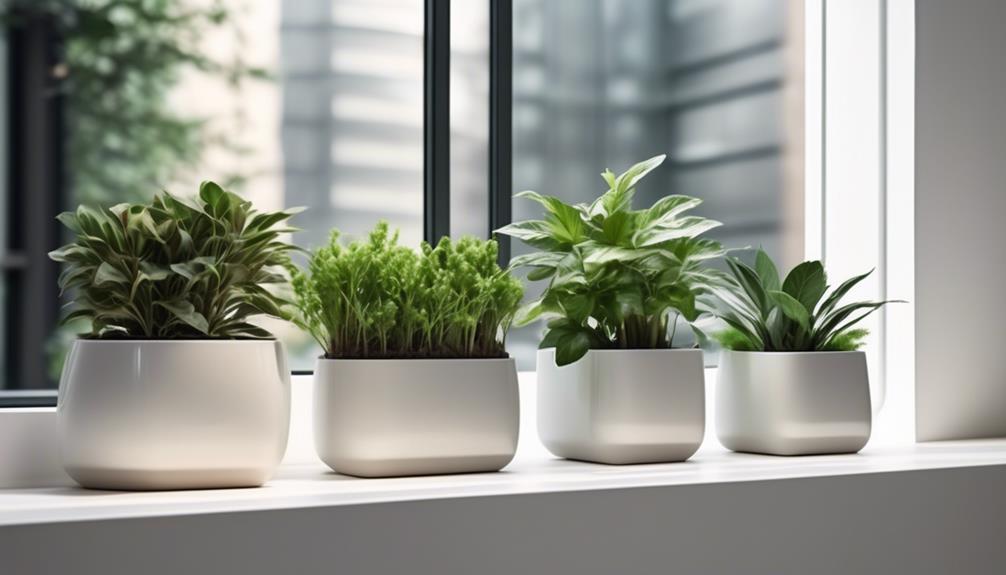
All of us have been there – forgetting to water our indoor plants. Did you know that over 60% of houseplants die due to improper watering? This startling statistic highlights the importance of finding ways to make sure our indoor greenery thrives.
That's where self-watering plant pots come into play. But how do they work, and are they really as effective as they claim to be? Let's explore the world of self-watering plant pots and uncover the benefits and potential drawbacks of this innovative solution for indoor gardening.
Key Takeaways
- Self-watering plant pots provide efficient water usage and reduce maintenance requirements.
- They promote optimal soil moisture levels and support steady plant growth.
- Self-watering pots contribute to water conservation efforts by reducing water wastage and preventing overwatering.
- When choosing a self-watering pot, consider material options, size considerations, and the plant's watering system.
Benefits of Self-Watering Plant Pots
Self-watering plant pots offer numerous advantages, such as efficient water usage and reduced maintenance requirements, making them a practical choice for indoor gardening.
The watering efficiency of self-watering pots is due to their unique design, which includes a reservoir that holds excess water. This reservoir allows the plants to draw water as needed, promoting optimal soil moisture levels and plant health. By providing a consistent water supply, self-watering pots support steady growth and reduce the risk of overwatering or underwatering, which can both be detrimental to plant health.
Furthermore, the environmental impact of self-watering pots is notable in terms of water conservation. The design minimizes water wastage by delivering water directly to the plant's roots, reducing evaporation and runoff. This not only benefits the individual plant but also contributes to broader water conservation efforts.
Additionally, the reduced maintenance requirements of self-watering pots make them an attractive option for individuals seeking to serve others through indoor gardening, as they offer a convenient and sustainable solution for plant care.
How Self-Watering Pots Work
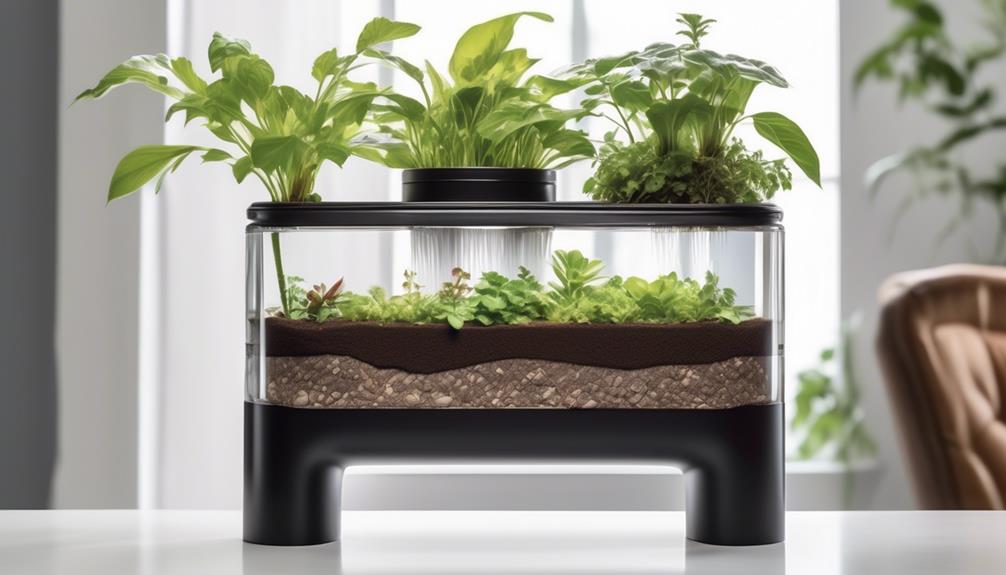
As we explore the mechanics of self-watering pots, it becomes evident that their unique design fosters efficient water usage and promotes optimal soil moisture levels for plant health.
Self-watering pots feature a reservoir at the bottom, which holds excess water. This reservoir is separated from the soil by a wicking mechanism, such as a wick or fabric, allowing water to be drawn up into the soil as needed. When the soil becomes dry, it wicks water from the reservoir, ensuring that the plant's roots have access to moisture at all times.
This mechanism not only promotes watering efficiency by reducing water wastage but also helps maintain consistent soil moisture levels, which is crucial for healthy root growth and overall plant health.
The self-watering system also minimizes the risk of overwatering, a common issue with traditional pots. By allowing the plant to draw up water as needed, self-watering pots create an optimal environment for root development, preventing waterlogged soil conditions that can lead to root rot and other complications.
This design serves to benefit both the plants and the individuals caring for them, promoting healthier, more vibrant indoor greenery.
Choosing the Right Self-Watering Pot
To select the appropriate self-watering pot for indoor plants, consider the specific requirements of the plant species and the pot's size and material composition.
When choosing a self-watering pot, it's crucial to consider the material options available. Plastic self-watering pots are lightweight and affordable, making them suitable for a variety of plants. They also retain moisture well and are easy to clean.
Ceramic self-watering pots, on the other hand, provide a more decorative option and better insulation for the soil, but they're heavier and more prone to breakage.
Additionally, size considerations are essential. The pot should be appropriately sized for the plant, allowing enough space for root growth while also fitting the available space in your indoor environment. A pot that's too large can lead to overwatering, while a pot that's too small may not provide adequate water for the plant's needs.
Maintaining Self-Watering Plant Pots

When maintaining self-watering plant pots, regularly check the water level indicator to ensure proper hydration for the plants. This is crucial for preventing overwatering and ensuring optimal soil moisture.
In addition to monitoring the water level indicator, here are some essential maintenance tips to keep your self-watering plant pots in top condition:
- Clean the reservoir: Regularly clean the reservoir to prevent the buildup of algae, mold, or mineral deposits, which can affect the water quality and potentially harm the plants.
- Inspect the soil moisture: Check the soil moisture periodically to ensure it remains at the optimal level for your specific plant species. Adjust the watering frequency if necessary to maintain the ideal moisture level.
- Prune roots if needed: Over time, the roots of the plants may grow into the water reservoir. Trim any excess roots to prevent them from interfering with the self-watering system.
- Check for clogs: Inspect the water delivery system, including the wick or any tubing, to ensure there are no clogs that could impede the flow of water to the soil.
Top Options for Indoor Self-Watering Pots
Indoor self-watering pots provide a convenient and efficient way to maintain optimal soil moisture levels for houseplants. When selecting a self-watering pot, it's essential to consider the various options available.
One top option is the ceramic self-watering pot, which combines functionality with aesthetic appeal. These pots typically feature a separate reservoir for water, allowing for easy monitoring of water levels.
Another popular choice is the plastic self-watering pot, known for its lightweight and durable properties. These pots often come with a water-level indicator, making it simple to gauge when it's time for a refill.
Additionally, glass self-watering pots offer a modern and elegant look while providing a clear view of the water reservoir.
For those looking for a more eco-friendly option, there are self-watering pots made from sustainable materials such as bamboo or recycled plastic. These pots align with environmentally conscious plant care practices.
Consider the size and specific watering system of each pot to ensure it meets the needs of your indoor plants.
Frequently Asked Questions
Can Self-Watering Plant Pots Be Used for All Types of Indoor Plants, or Are There Specific Plants That Work Best With This Type of Pot?
Self-watering plant pots are suitable for a wide range of indoor plants. They're particularly beneficial for moisture-loving plants like peace lilies, spider plants, and ferns. These pots provide a consistent water supply, promoting healthier growth and reducing the risk of overwatering.
They work well for busy individuals or those who may forget to water their plants regularly. Overall, they're a convenient and effective option for many indoor plant varieties.
Are Self-Watering Plant Pots Suitable for People Who Travel Frequently and Are Away From Home for Extended Periods of Time?
Struggling with plant care while traveling? We've got you covered.
Self-watering plant pots are a game-changer for frequent travelers, offering a reliable watering solution. These pots enable remote monitoring, ensuring your indoor plants stay healthy even when you're away.
With a reservoir that supplies water as needed, self-watering pots are ideal for extended periods of absence. Say goodbye to wilted plants and hello to worry-free travel.
Do Self-Watering Plant Pots Require a Different Type of Soil or Fertilizer Compared to Traditional Plant Pots?
Self-watering plant pots have several unique characteristics and requirements.
One important consideration is the soil type. While these pots don't necessarily require a different soil type, they do benefit from a well-draining mix. This helps prevent waterlogging and ensures optimal growing conditions for your plants.
In terms of fertilizer, a balanced liquid fertilizer is suitable for self-watering pots. This provides the necessary nutrients for healthy plant growth.
One advantage of self-watering pots is that they reduce the frequency of watering. The self-watering mechanism takes care of delivering water to the plants as needed. However, it's still important to monitor soil moisture levels to ensure that your plants are not under or over-watered.
Maintenance is also an important aspect of using self-watering pots. Occasional cleaning of the water reservoir is recommended to prevent the buildup of algae or bacteria. Additionally, it's important to check for any clogs in the watering system to ensure that water can flow freely to the plants.
Are There Any Potential Drawbacks or Disadvantages to Using Self-Watering Plant Pots Indoors?
Potential drawbacks of self-watering pots include increased maintenance requirements. While they provide consistent moisture, they can also lead to overwatering if not monitored closely. Additionally, they may require periodic cleaning to prevent algae growth in the reservoir. Regularly checking water levels and adjusting as needed is essential.
However, the benefits of reduced watering frequency and consistent moisture levels often outweigh these drawbacks.
Can Self-Watering Plant Pots Be Used in Conjunction With Other Watering Methods, Such as Misting or Bottom Watering, for Certain Types of Plants?
We've found that misting, when used in conjunction with self-watering, can benefit certain plants. Misting helps maintain humidity levels, especially for tropical plants.
Bottom watering alongside self-watering can promote root development. It's crucial to understand each plant's specific needs, as overwatering can lead to root rot.
Conclusion
In conclusion, self-watering plant pots offer a convenient and efficient way to keep indoor plants healthy and thriving. By utilizing a passive watering system, these pots regulate moisture levels and reduce the risk of over or under-watering.
With various options available, it's important to consider factors such as plant type and pot size when choosing the right self-watering pot. By maintaining proper care and selecting the best pot for your needs, you can enjoy the benefits of self-watering plant pots for your indoor gardening.
With a green thumb and a keen eye for detail, Kayla leads our content with expertise and enthusiasm. Her dedication to spreading the joy of home gardening is reflected in every piece of advice and tip shared. She ensures that our community receives the most reliable and practical gardening insights.
-
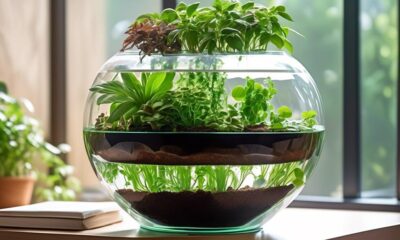
 Self Watering Plant Pots3 weeks ago
Self Watering Plant Pots3 weeks agoHow Do Self Watering Planter Pots Work
-

 Vetted3 weeks ago
Vetted3 weeks ago15 Best Terrace Planters to Elevate Your Outdoor Space
-
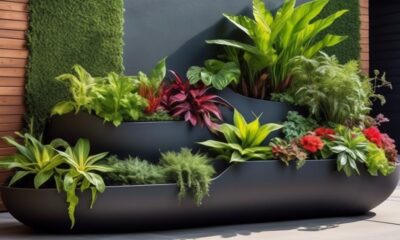
 Vetted3 weeks ago
Vetted3 weeks ago15 Best Wicking Planters to Keep Your Plants Thriving and Healthy
-

 Vetted3 weeks ago
Vetted3 weeks ago15 Best Waterwick Pots to Keep Your Plants Thriving and Healthy
-
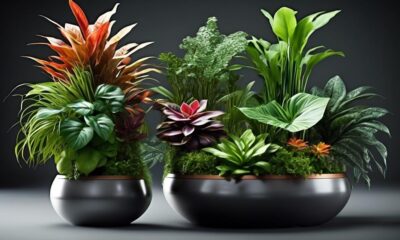
 Vetted3 weeks ago
Vetted3 weeks ago15 Best Self-Watering Pots to Keep Your Plants Thriving
-

 Self Watering Plant Pots3 weeks ago
Self Watering Plant Pots3 weeks agoSelf Watering Flower Pots Home Depot
-
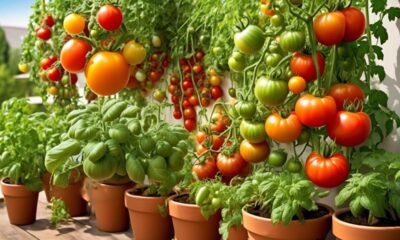
 Vetted3 weeks ago
Vetted3 weeks ago15 Best Tomato Pots for Growing Perfect, Juicy Tomatoes at Home
-

 Vetted3 weeks ago
Vetted3 weeks ago15 Best Self-Watering Plants for Busy Plant Lovers – Never Worry About Overwatering Again
















